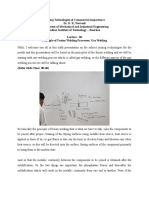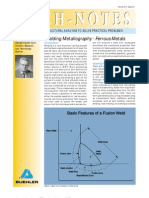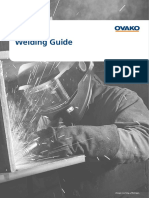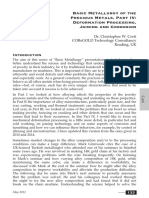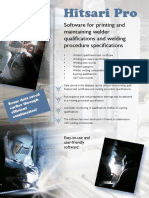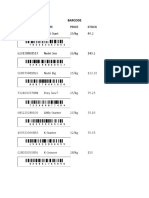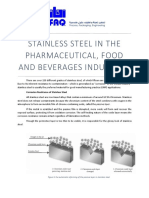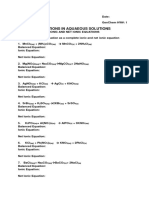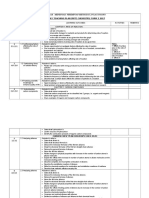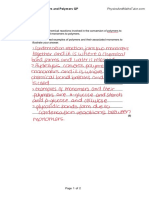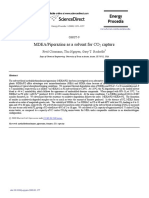Repair welding of Marine service
aluminum by Ledon Watkins
Jun 25, 2015
48 views
13 Likes
1 Comment
Share on LinkedIn
Share on Facebook
Share on Google Plus
Share on Twitter
A little background information can go a long way when you are striving to achieve a high
quality end result. Working with aluminum is no exception. The primary material you work
with is the first thing you should be familiar with. Knowing how it acts, reacts can provide
you with ways to correct or limit problems found.
5086-H116 Aluminum is the most common grade used for the construction of marine craft
and small boats. So we will use that condition as our first material for comparison. The
second will be 5086-0. The only difference between these two metals is the heat treat
condition or temper. H116 is tempered at -116 degrees F while 0 is untempered.
5086-0: Yield - 17 ksi; Tensile - 38 ksi; Elong. - 30%; Shear - 23 ksi
5086-H116: Yield - 30 ksi; Tensile - 42 ksi; Elong. - 12%; Shear - 28 ksi
a) Yield is the point where deformation or bending occurs
b) Tensile is the break point
c) Elongation is the amount of slow deformation the material is capable of achieving before it
reaches tensile
d) Shear is the point at which it will break under impact.
Why would any of this be important for an inspector to know? Because often a little basic
knowledge can help you understand the cause of a failure.
1. Aluminum in a salt atmosphere is prone to Stress Corrosion Cracking (SCC). The chlorine
from the salt in the air diffuses into the metal and over time, weakens the bond between
grains causing both corrosion and cracking.
2. Aluminum is prone to Sensitization. Cycles of hot and cold (even the heating and cooling
of the sun), stress and relaxation cause the metal over time to lose ductility and become
brittle. Sensitization cracking can form anywhere within the weld or base material.
3. Welding reduces local areas from the manufactured temper to Temper 0, further
weakening the metal and causing additional sensitization due to stress loading and
concentrated heat cycles.
�As inspectors you are taught to inspect the Weld Zone and the Heat Affected
Zone. However, a perfectly acceptable weld this morning could be cracked or exhibit a crack
inches away from the HAZ tomorrow morning. That is because there are other zones which
you can’t inspect, but should be aware of.
Below is an explanation of those zones. The size of each zone is dependent on the base metal
thickness and the heat induced:
1. The Weld Zone - in this area the metal has been heated to beyond the melting point. An
alloy was introduced which has a slightly different chemical composition. Each of these
factors contribute to sensitization and stress loading. Also included in this is a nearly
microscopic area called the Fusion Zone. This is the area where the filler and the base metals
mix to form the bond. It will have a different chemical composition that either the Filler or
Base metal and the most concentration of stresses. Each of the three metals in this small area
will have different mechanical properties, which means different stress loads, with the Fusion
Zone being the most susceptible to cracking. Each of these different components of the weld
also have an induced level of sensitization. The amount of sensitization and stresses depend
on how well the welder performed within his parameters and how well the plate was fit up.
a. Heat control parameters help to keep the stress and sensitization to a minimum. This also
includes cooling rates. Cooling to fast will increase stresses and brittleness.
b. Proper fit up reduces the heat induced warpage, draw and shrinkage which in turn reduces
stress.
2. The Heat Affected Zone (HAZ) – has been heated to beyond the Anneal
(recrystallization) temperature. All temper has been changed. Depending on the cooling rate
the temper could be lost or the metal embrittled.
3. The Temper Zone – is the area outside the HAZ which was also heated but to a lesser
extent, but enough to change the mechanical properties. In this area all temper is lost. 5086-
H116 becomes 5086-0. You are much less likely to find cracking in this area since you have
reduced the hardness and increased ductility.
4. The Sensitization Zone – is the area where the most stresses will be found, outside of the
Fusion Zone. The in-service base metal contains sensitization, cyclic stresses, chlorination
and service induced impurities. The abrupt change in temper concentrates all of the various
stresses in a very small area. Like the Fusion Zone, this is a very narrow area with the
highest concentrations of stress and very prone to cracking.
You can’t control what service has done to the plate. But you can control what the welding
operations add.
1. Ensure Heat Controls! Both in-process and post process.
2. Ensure Proper Fit Up! The primary means to controlling #1.





